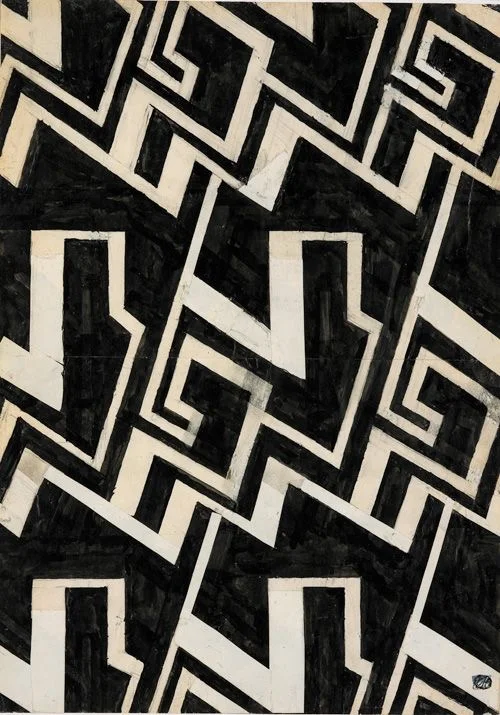INTRODUCING | LANZAMIENTO
STUDIO OF ENDLESS IDEAS, AN ARTIST-BASED DIGITAL PLATFORM CREATED BY MONIKA BRAVO TO INTEGRATE & SHARE A BROAD RANGE OF INTERESTS*:
*[TEXTILES, PODCASTS, WORKSHOPS, ASTROLOGY ONLINE READINGS, PERSONAL ARCHIVE OF INSPIRATION]
STUDIO OF ENDLESS IDEAS ES UNA PLATAFORMA ARTÍSTICA DIGITAL CREADA POR MONIKA BRAVO PARA INTEGRAR Y COMPARTIR SU AMPLIO RANGO DE INTERESES*
*[TEXTILES, PODCASTS, TALLERES, LECTURAS DE ASTROLOGíA EN LINEA, ARCHIVO PERSONAL DE INFLUENCIAS]

{NEW} TEXTILE-OBJEKT
UNIQUE + FUN + WEARABLE: AVAILABLE AS VARIATIONS [PRINTED IN ITALY, DESIGNED & HAND MADE BY MONIKA HERSELF]
PIEZA ÚNICA + DIVERTIDA + UTILIZABLE: DISPONIBLE EN VARIACIONES [IMPRESA EN ITALIA, DISEÑADA Y HECHA A MANO POR MONIKA]

USE THE CODE AMICI AT CHECKOUT FOR A DISCOUNT
USA EL CODIGO AMICI AL PAGAR
ALSO IN THE SITE: TAMBIEN EN EL SITIO:

SS6.2018 | SILK | SEDA

SV05.2018 WOOL | LANA
2006’s ‘Who’s Afraid of Red, Yellow and Blue³,’ made of polyurethane paint on aluminum. PHOTO: © 2015 ROBERT IRWIN/ARTISTS RIGHTS SOCIETY (ARS), NEW YORK
“To be an artist is not a matter of making paintings or objects at all. What we are really dealing with is our state of consciousness and the shape of our perceptions.”
HOFFMANN’S VAST BODY OF WORK INCLUDES FURNITURE, GLASS, METALWORK, PORCELAIN AND TEXTILES, WITH SOME DESIGNS INTENDED FOR MASS PRODUCTION AND OTHERS FOR #HANDCRAFTED ITEMS. SEVERAL OF HIS DESIGNS ARE STILL IN PRODUCTION TODAY, INCLUDING THE RUNDES MODELL CUTLERY SET PRODUCED BY ALESSI, AND HIS KUBUS ARMCHAIR
Louise Bourgeois grew up in a tapestry restoration studio run by her parents, and was since earlier part of the daily dyeing and re-weaving activities. Although Bourgeois work with fiber medium throughout all her life, mainly in sculpture, the fabric “drawings” became her central focus in the last decade of her life.
“Her works on fabric are emblematic of certain themes: marriage, motherhood, sexuality, femininity, domesticity. This focus on the familial results in work of intense psychological complexity, exposing relationships and hierarchies related to female identity and its opposite (male/female, mother/father, organic/geometric, rigid/pliable). Coinciding with an inclination, at old age, to stay closer to home, Bourgeois’s late fabric works provide a sense of introspection – her wardrobe and linen closet became representative of memory.
Italian designer Gino Sarfatti (1912-1985) was a master of lighting design and founder of the lighting brand Arteluce. Sarfatti was born in Venice and moved to Genoa to study aeronautical engineering until he was forced to interrupt his studies in the late 1930s due to the war. Sarfatti founded Arteluce in Milan in 1939. In 1943, he and his family had to flee from Italy to Switzerland but returned after the war to Milan to reorganize Arteluce’s production. The 1950s was a golden era for Arteluce: in 1954, two of Sarfatti’s lamps were awarded the Grand Prix at Milan’s Triennale, and in the two following years his designs received the Compasso d’Oro award. In 1973, Sarfatti sold Arteluce to the Italian lighting manufacturer Flos who continues the production of Sarfatti’s design classics.
With a background as a painter, and cellist/violinist, Walter Ruttmann found his way to making experimental abstract animations in the 1920s, and later, feature length documentary films. Ruttmann was in a milieu of painters, poets and musicians who saw in the new media a possibility to expand the limits of the fine arts. They described their abstract films as visual music, seeking to achieve a similar experience in the visual as in music. The overall idea of their works was also linked to the concept of the absolute film; the idea of a universal language of abstract images.
Jung was interested in the psychological aspects of séances, of astrology, of witchcraft. He could be jocular and also impatient. He was a dynamic speaker, an empathic listener. He had a famously magnetic appeal with women. Working at Zurich’s Burghölzli psychiatric hospital, Jung listened intently to the ravings of schizophrenics, believing they held clues to both personal and universal truths.
Emma Kunz lived from 1892 to 1963 in the German-speaking part of Switzerland. In her lifetime she was recognized as a healer; she herself described herself as a researcher. Now she has acquired an international reputation through her artistic work. Even in her schooldays, Emma Kunz occupied herself with exceptional happenings. When she was 18 years old, she began to use her abilities of telepathy, prophecy and as a healer, and she began to exercise her divining pendulum.
“The pictures were painted directly through me, without any preliminary drawings, and with great force. I had no idea what the paintings were supposed to depict; nevertheless I worked swiftly and surely, without changing a single brush stroke." HILMA AF KLINT
As a designer she created everything from posters and books to sets and costumes for local theaters. She became so involved with the world of theater design that she even designed textiles for use in the manufacturing of the costumes for the productions she helped design. Her work, along with the work of the rest of the Russian avant-garde and Constructivist artists, helped pave the way for all modern day graphic designers as they created art with a purpose in hopes of bettering the society in which they lived.
Over the course of his 50-year activity, he invented numerous decorative techniques which contributed significantly to the renovation of art glass. Already in the Twenties he obtained great success; first with the murrine vessels, then with totally original creations such as the primavera glass collection (1929-30).
“It’s so wonderful to watch an animal, because an animal has no opinion about itself.” ~ Eckhart Tolle



















